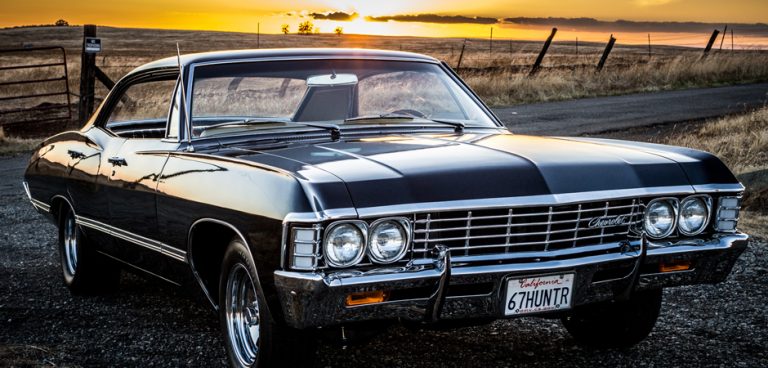What Is The Make And Model Of A Car?
When discussing cars, you often encounter terms like “make” and “model.” The make of a car refers to the company that manufactured it, such as Ford or Toyota. The model is the specific type of car produced by that company, like the Ford Mustang or Toyota Camry. These terms are used to identify and differentiate the various types of vehicles available in the market. Knowing the make and model helps in recognizing the car’s design, features, and specifications. In this guide we will find out what these terms mean and their significance in the automotive industry.

What is the Make of a Car?
The “make” of a car refers to the brand or manufacturer that produced the vehicle. It is essentially the company name under which the car is sold. The make of a car is a way to identify the company that designed and manufactured the vehicle, often indicating the quality, reputation, and image associated with that brand. Knowing the make of a car helps consumers understand the level of reliability, performance, and support they can expect.
Examples of Car Makes
Here are some well-known car makes, each with its distinct reputation:
-
Toyota: Known for reliability and efficiency, Toyota is one of the largest car manufacturers in the world. Models like the Camry and Corolla have become synonymous with durability and long-term value.
-
Ford: An iconic American brand, Ford is credited with revolutionizing automotive production. It offers a wide range of vehicles, including the bestselling Ford F-150 truck and the popular Ford Mustang sports car.
-
Mercedes-Benz: Representing luxury and high performance, Mercedes-Benz is a German brand known for its high-quality engineering, advanced technology, and sophisticated design. Popular models include the S-Class, known for luxury, and the C-Class, known for performance.
-
Honda: Honda is renowned for its innovative engineering and reliability. The Honda Civic and Accord are examples of its versatile range of models that cater to both economy and performance.
-
Tesla: A newer entrant compared to other makes, Tesla has quickly established itself as a leader in electric vehicle technology. Known for models like the Model S and Model X, Tesla emphasizes sustainability, performance, and advanced technology.
What is the Model of a Car?
The “model” of a car refers to the specific name or designation given to a particular version of a vehicle produced by a manufacturer. While the make of a car tells you about the brand (such as Toyota, Ford, or Mercedes-Benz), the model identifies the specific product line under that brand. Each model represents a unique design, set of features, and targeted market niche.

Car models are essentially different products offered by the same manufacturer. These models differ in size, style, features, performance specifications, and price ranges. Manufacturers often use model names to convey the characteristics or the appeal of the vehicle, and they might also offer different trim levels and options under the same model name to cater to various preferences and budgets.
Examples of Car Models
Here are a few examples of car models from well-known manufacturers:
-
Toyota Corolla: This model from Toyota is one of the best-selling cars globally, known for its reliability, fuel efficiency, and affordability. It’s a compact car that appeals to a wide range of consumers.
-
Ford Mustang: A famous model from Ford, known for its powerful performance and iconic status as an American sports car. The Mustang has various configurations offering different levels of performance and luxury.
-
Mercedes-Benz S-Class: This model is one of the flagship vehicles of Mercedes-Benz, epitomizing luxury and advanced technology. The S-Class is often equipped with the latest safety features, comfort enhancements, and technological innovations.
-
Ferrari 488 GTB: An example of a high-performance sports car model from Ferrari, the 488 GTB is renowned for its exceptional handling, advanced aerodynamics, and powerful turbocharged engine. It embodies Ferrari’s commitment to blending state-of-the-art technology with thrilling performance.
-
Honda Civic: Another example of a popular model, the Civic is known for its durability, efficiency, and versatility. It comes in various forms, including sedan, coupe, and hatchback, each catering to different user needs.
What are the Differences in a Car Model?
Car models within the same make can vary quite a bit, catering to different needs and preferences. Here’s a breakdown of the key factors that differentiate car models:

1. Body Style:
Function and Passenger Capacity: This is a major differentiator. Common body styles include:
- Sedan: A four-door car with a separate trunk, offering good passenger space and comfort for everyday driving. (e.g., Honda Accord)
- SUV: Sport Utility Vehicles prioritize space and functionality, often with a higher ride height and cargo capacity. Perfect for outdoor adventures or growing families. (e.g., Toyota RAV4)
- Coupe: Two-door cars with a sporty design, typically seating four passengers and focusing on a driver-centric experience. (e.g., Ford Mustang)
- Hatchback: A versatile option with a rear door that opens upwards, offering good cargo flexibility and passenger space. (e.g., Volkswagen Golf)
2. Size and Performance:
- Dimensions and Weight: Models within a make can range from compact city cars to large luxury sedans. The size impacts handling, maneuverability, and fuel efficiency.
- Engine Power and Performance: Different models offer varying engine options, affecting horsepower, acceleration, and towing capacity. Some prioritize fuel efficiency with smaller engines, while others focus on power with larger engines.
3. Features and Trims:
Standard vs. Optional Features: Car models often come in different trim levels. Base trims offer essential features, while higher trims add amenities like sunroofs, navigation systems, advanced driver-assistance systems, and premium sound systems.
4. Target Market and Price:
Who is it For?: Manufacturers design models to appeal to specific demographics. For example, a sporty coupe might target younger buyers, while a luxurious SUV might cater to families.
Price Point: A significant differentiator. Higher trims with more features tend to be more expensive than base models. Additionally, a larger, more powerful car will generally cost more than a compact model.
Here’s an example to illustrate these differences:

- Make: Toyota
- Model 1: Camry (Mid-size Sedan) – Offers a comfortable ride, good fuel efficiency, and plenty of space for passengers and cargo. Suitable for families and everyday driving.
- Model 2: Corolla (Compact Car) – A smaller, more economical option compared to the Camry. Good for city driving and easier to maneuver.
- Model 3: 86 (Sports Coupe) – A two-door car with a focus on sporty handling and performance. Ideal for driving enthusiasts.
How to Find Your Car’s Make and Model?
Finding the make and model of your car is quite straightforward, but for those new to vehicle ownership or anyone who might be dealing with paperwork or maintenance for the first time, it’s crucial to know exactly where to look. Here’s how to accurately identify your car’s make and model:

1. Check Your Vehicle Registration Document
The easiest and most reliable way to find your car’s make and model is to look at your vehicle registration document or title. This official document should list the make, model, year, and other important details about your car. It’s provided and required by most governmental motor vehicle departments.
2. Look at the Car’s Owner’s Manual
Every car comes with an owner’s manual, which is usually found in the glove compartment. The front cover or the inside first page typically lists the make and model of your car, along with the year of manufacture.
3. Inspect the Exterior and Interior of the Car
- Exterior Badges: Most cars have the make and model displayed on the exterior, typically at the rear of the vehicle. The make can usually be found centered or off to one side of the trunk, while the model is often nearby or on the opposite side.
- Interior Dash: Sometimes, the model name is displayed on the dashboard or steering wheel, and you can usually see the manufacturer’s logo inside as well.
4. Check the Vehicle Identification Number (VIN)
The VIN is a unique 17-character serial number used to identify the specific vehicle. It encodes various details, including the make and model.
- Location: The VIN can typically be found on the dashboard on the driver’s side of the vehicle (visible through the windshield), on a sticker inside the driver’s side door jamb, or on official documents related to the vehicle.
- Decoding: You can input the VIN into various online VIN decoder tools that will tell you detailed information about your vehicle, including the make, model, year, engine type, manufacturing location, and more.
5. Use Insurance or Service Records
Your insurance policy or service records from a mechanic or dealership should also contain the make and model of your car. These documents are reliable sources and often include additional information like the engine size and body style.
6. Look Under the Hood
Sometimes, the make and model are mentioned on a label under the hood of your car. This label often includes other useful information like the engine size and configuration.
7. Car Sales or Information Websites
If you know the registration number of your car, you can use various car check websites that can provide full details about the vehicle. These sites typically require you to enter the car’s registration number, and then they display the make, model, and other important data.
Why Is a Car’s Make and Model Important?
The make and model of a car are important for several reasons that impact both your ownership experience and the car itself:
1. Vehicle Identification and Registration
The make and model of a car are essential for its identification. This information is required for registration with local motor vehicle departments, and it helps law enforcement and other agencies track vehicle ownership and history.
2. Maintenance and Repairs
Different makes and models have specific maintenance schedules and requirements. Knowing your car’s make and model helps you adhere to the appropriate maintenance schedule, ensuring the vehicle’s longevity and performance. Moreover, when repairs are needed, mechanics will require this information to source the correct parts and employ the right techniques specific to your car. This precision avoids the risk of incorrect repairs and parts, which can cause further problems down the road.
3. Compatibility of Parts
Each model of the car often has parts that are uniquely designed to fit its specific configuration. From engine components to body panels and even accessories, knowing the exact model ensures that you can purchase the correct parts that will fit and function properly.
4. Insurance Purposes
When you insure a vehicle, the make and model are used to determine the risk associated with insuring the car, its likely repair costs, and the potential replacement value. Cars with a history of reliability and lower repair costs might be cheaper to insure, whereas high-performance or luxury models may carry higher premiums due to their increased repair costs and higher likelihood of theft.
5. Resale Value
The make and model significantly influence a car’s resale value. Some makes and models are known for their durability and reliability, which can sustain their value over time. Conversely, models known for frequent breakdowns or expensive maintenance may depreciate more quickly. Knowing the make and model helps you and potential buyers understand what to expect in terms of performance, safety, and technology, which are key factors in determining resale value.
6. Fuel Efficiency
Fuel economy can vary widely between different makes and models, even among vehicles that appear similar. Manufacturers provide estimated fuel efficiency ratings based on the make and model, helping owners estimate running costs and consider their environmental impact.
7. Safety Ratings
Safety ratings can differ significantly between different makes and models. Organizations that conduct crash tests, such as the National Highway Traffic Safety Administration (NHTSA) and the Insurance Institute for Highway Safety (IIHS), provide safety ratings that help consumers make informed decisions. These ratings can influence purchasing decisions, as well as insurance costs.
8. Legal and Compliance Issues
Certain makes and models may be subject to specific legal restrictions or recalls. Owners need to be aware of these to ensure that their vehicle complies with safety standards and to take advantage of any recall programs that may address vehicle defects.
Frequently Asked Questions
Is Jeep a make or a model?
Jeep is a make, not a model. It’s an American automobile brand, currently owned by the multi-national corporation Stellantis. The brand has been part of Chrysler since 1987, with a range of models under its name.
Can I use a VIN to find my car’s make and model?
Yes, you can. The Vehicle Identification Number (VIN) can be decoded to reveal critical information about your car, like make, model, where it was manufactured, and the type of engine it has, among other details.
How can I identify my car’s make and model?
There are several ways to identify your car’s make and model. You can often find this information by looking at the emblems or logos on your car’s exterior. Additionally, you could check the information printed on the first few pages or the front cover of your vehicle’s owner manual.

Hi! I’m Larry Gibbs, studying mechanical engineering with a focus on cars. I really love Ferraris and write blog posts about the latest car stuff. When not studying or blogging, I’m usually on a road trip exploring new places. I also enjoy playing football and watching movies. Life’s an adventure, and I’m all about enjoying the ride!






